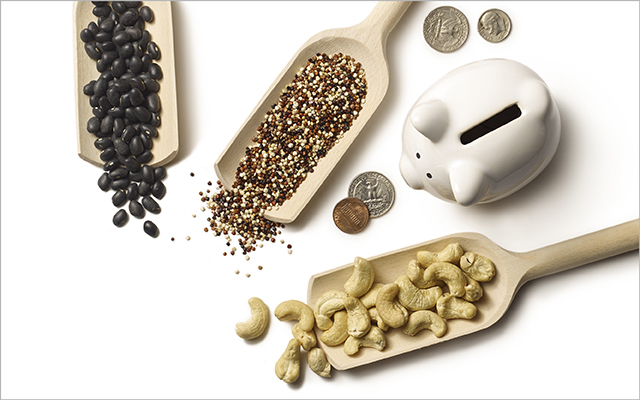Organic food often costs more than conventional fare, but many cooks and wellness experts agree that they pay off in flavor and nutrition, and in health benefits — for you and the environment. These tips can help you save money when you opt to go organic.
1. Prioritize produce. Selecting organic is most important when buying veggies and fruits, experts advise, because it will reduce your exposure to herbicide and pesticide residue. Check out the Environmental Working Group’s annual Dirty Dozen and Clean Fifteen lists at www.ewg.org for tips on what to pick — and what to avoid. Opting for organic dairy and meat is next in importance. Pass on organic packaged foods, since they’re expensive and highly processed.
2. Buy higher-quality meat — but less of it. Organic, grassfed meat may be near the top of your priority list, but it will cost more. Consider quality over quantity. Or look for less-expensive cuts — roasts, shanks, ground meat, eye-of-chuck steaks — that might need to cook longer but often have more flavor than prime cuts.
3. Buy seasonal. In-season produce is the freshest, best-tasting choice, and it will often save you money. Farmers’ markets and community-supported agriculture programs (CSAs) are great sources.
4. Go local. Produce from nearby farms can ripen longer — and therefore taste better — because it doesn’t need to be shipped far. Choosing local also saves on transportation costs, reduces the carbon footprint, and -supports regional farmers.
5. Cook from scratch. Rather than buying costly premade organic meals, save by purchasing the ingredients and preparing them yourself. Plus, you can make extra portions for lunches or freeze them for another meal.
6. Buy in bulk. Score additional savings by buying larger quantities of organic produce that keeps longer, such as onions, potatoes, and dried foods. If you have the freezer space, consider purchasing meat in bulk from butchers, co-ops, or organic farms.
7. Plan meals and reduce waste. The average household wastes up to 40 percent of its food because of poor planning and inadequate storage. Build meal plans — and grocery lists — around the food that’s already in your fridge. Store older veggies in one drawer and newer in a separate one, and rotate them so you don’t lose sight of what’s on hand.
8. Grow your own organics. Start small with herbs, which can provide big savings (see “An Herb Garden for Beginners”). Move up to easy-to-grow items like lettuce and other greens, zucchini, and cucumbers. Then try cultivating peppers, tomatoes, and carrots. Next thing you know, you’ll have a full, vibrant, healthy garden — and a budget-friendly supply of organic produce.




This Post Has 0 Comments